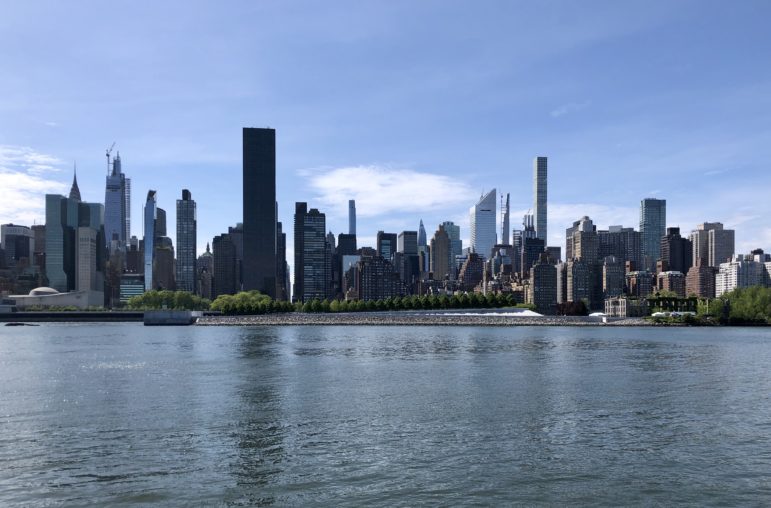The undocumented population overall also declined in both the city and state, from almost one million (916,611 persons) across the state in 2010 to 641,683 two years ago, a reduction of almost 30 percent.

Jeanmarie Evelly
This article originally appeared in Spanish. Translated into English by Daniel Parra. Lea la versión en español aquí.
For many years it was difficult to know how the undocumented population was distributed at the hyper-local level in each state, to such an extent that for Robert Warren, one of the demographers behind new estimates from the Center for Migration Studies of New York (CMS), the major finding of the just-released data is finally having the detailed information itself.
“The very existence of this tool is by far the most surprising finding,” said Warren, who was one of the first demographers to collect accurate data on the nation’s undocumented immigrant population during the 1980s at the former Immigration and Naturalization Service (INS).
“Up until seven years ago, we had some indicators, but not much more information,” Warren added over the phone.
The new map created by CMS, developed based on microdata from the Census Bureau’s American Community Survey (ACS), displays a number of indicators for both the undocumented and eligible-to-be-naturalized populations at the national, state, and sub-state level. Among the trends it illustrates is the recent reduction of the country’s undocumented population, which in 2010 hovered around 11.73 million people and in 2019 stood at 10.34 million, a 12 percent drop.
During the presentation of this database to the media, Warren explained that there is more information confirming that two out of three undocumented immigrants now arrive in the U.S. by plane, and only one in three come through the southern border with Mexico, where enforcement efforts have been concentrated during the past several presidential administrations.
Education, poverty, and health insurance
Another of the most striking indicators is school enrollment, specifically those at the Bachelor’s degree level or higher, which made up 18.5 percent of the country’s undocumented in 2019. Moreover, between 2010 and 2019, the percentage of people with a college-level education grew at about the same rate among the undocumented (5.8 percent) and the U.S. population (6.1 percent). By comparison, however, the percentage of the U.S. population enrolled at the university level is almost double (36 percent) that of the undocumented population.
Compared to the nationwide numbers, both New York State and New York City are home to a higher percentage of undocumented people 18 or older at this education level, at 21.2 and 20.7 percent respectively.
Poverty among the undocumented population is another indicator that shows some progress in recent years. Nationally, 71.5. percent of the population was living above the poverty line in 2010, increasing to 80.4 percent in 2019. The number of undocumented residents living below or at the poverty line decreased from 28.5 percent in 2010 to 19.6 percent in 2019.
Despite these gains, the country’s undocumented still have a higher percentage of the population living below the poverty line than the native-born U.S population did a decade ago in 2010 at 15.3 percent.
Again, both New York State and New York City have fewer undocumented residents living in poverty than at the national level, with 83.9 percent of the undocumented population living above the poverty line in the state, and 16.1 percent below or at the poverty line, in 2019.
The number of undocumented immigrants with health care coverage nationwide also jumped over the last decade, with almost half (49.9 percent) of the population insured in 2019, up from just 31.5 percent in 2010.
New York State saw an even bigger jump in health care coverage for undocumented people. In 2010, 35.5 percent said had coverage and by 2019, 58.6 percent did—but the city falls two points behind, at 56.1 percent.
The undocumented population overall also declined in both the city and state, from almost one million (916,611 persons) across the state in 2010 to 641,683 two years ago, a reduction of almost 30 percent.
The reduction of undocumented migrants was even greater in the city alone, falling by 34.2 percent, with 685,734 people in 2010 to 450,864 in 2019. This figure is quite close to that presented in the latest report from the New York Mayor’s Office of Immigrant Affairs, which estimates that there are 476,000 undocumented immigrants in the city.








